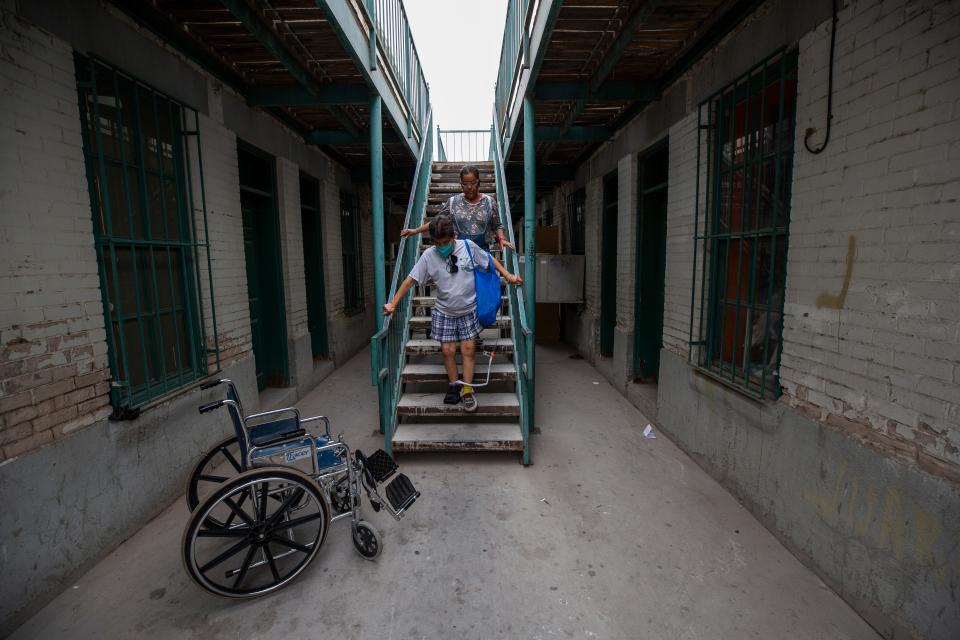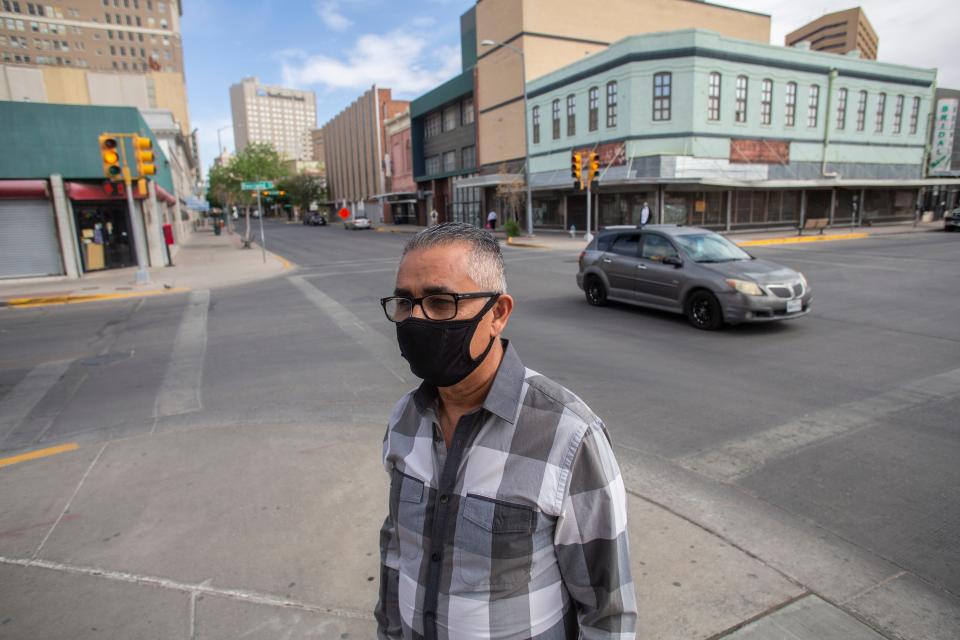El Paso City Council moves ahead with Vision Zero resolution to eliminate traffic deaths
Every year, dozens of people die on El Paso roadways. City officials say it's time to put an end to the death toll.
The El Paso City Council unanimously approved a Vision Zero resolution Tuesday that sets an aggressive goal to eliminate all traffic deaths and serious injuries and rethink street design to protect the most vulnerable road users. To fund the ambitious strategy, the city is eyeing federal grants for safe streets from the U.S. Department of Transportation. With the resolution adopted, the next step for El Paso is to develop a Vision Zero Action Plan.
El Paso has seen an increase in traffic deaths in recent years. Earlier this year El Paso was named one of the most dangerous U.S. cities for pedestrians. In 2021, 75 people died in traffic crashes in El Paso, according to the Police Department. As of Tuesday, 51 people have died in traffic crashes this year in El Paso, compared to 47 at this point last year.
"I really want to thank you all for this," Scott White of the Velo Paso Bicycle-Pedestrian Coalition told the City Council during public comment on the resolution. "Getting to the point where we are actually going to reach zero traffic deaths ... that’s going to mean a great deal to the people of this community."
More:Texas Transportation Commission OKs Downtown I-10 expansion despite Stout's opposition
Traffic deaths in El Paso are rising
Like many cities across the U.S., El Paso is struggling to stop rising traffic deaths, let alone eliminate them all together. The 2022 Dangerous by Design report, released in July by the nonprofit Smart Growth America, found that El Paso's pedestrian safety record is worsening.
The report found El Paso is the 18th most dangerous city in the country for pedestrians, with 124 pedestrians killed between 2016 and 2020. That is 2.95 pedestrian deaths per 100,000 residents per year, surpassing other Texas metropolitan areas. This death rate was an increase from the 2011 to 2015 time period.
According to the El Paso Police Department, a total of 75 people were killed on El Paso streets during 2021. The department said a breakdown of how many of the fatalities were pedestrians would need to be obtained through a public records request. According to an information packet prepared by the El Paso Capital Improvement Department, the number of collisions in El Paso in which someone died or was severely injured went down in 2020 at the start of the pandemic. But then it rose in 2021, above pre-pandemic levels.
An El Paso Times analysis in 2021 found that Hispanics, who make up about 83% of El Paso's population, are more than three times as likely to be hit by a car than Anglo pedestrians. The analysis found that between 2015 and 2021, the most dangerous area in the city was a 1-mile radius that included Downtown El Paso and the Chihuahuita neighborhood, in which there were nine fatal crashes.

More:'I don't know if I will return': El Paso pedestrians at high risk of being hit by vehicles
What is Vision Zero?
El Paso joins other Texas cities including Dallas, Austin, Corpus Christi, Houston and Laredo that already have adopted Vision Zero. The movement started in Sweden in the 1990s when the country committed to ending traffic deaths. Vision Zero seeks to shift from a system in which traffic deaths are inevitable to a model in which public officials proactively identify and address risks.
Vision Zero cities prioritize the most vulnerable road users, including pedestrians, cyclists and people with disabilities. El Paso also plans to integrate racial and socio-economic equity to its Vision Zero plan to address the higher risk people of color and low-income residents face on city streets.
While European cities steadily reduced traffic deaths since the 1990s, many U.S. cities that signed on to Vision Zero have failed to replicate their success. Los Angeles committed in 2015 to ending traffic deaths by 2025. Instead, the city had 289 traffic deaths in 2021, the highest total in nearly two decades.
White, of Velo Paso Bicycle-Pedestrian Coalition, is an urban planner who has tracked the implementation of Vision Zero in other cities. He commended El Paso for adopting the strategy and said its success will depend on collaboration between the city, the Metropolitan Planning Organization and the Texas Department of Transportation. He said reducing speed limits and speeding is essential to preventing the most dangerous crashes.
"Long story short, I love it," he said in response to El Paso's Vision Zero resolution. "There’s a lot we need to fix to make our streets and roads safe."

More:'We're discovering Juárez together': Cyclists celebrate culture, reclaim public space
Vision Zero planning for El Paso
The resolution adopted Tuesday is the first step of El Paso's Vision Zero strategy. According to the Capital Improvement Department, the city now will initiate a public awareness campaign and community- and neighborhood-level engagement. A Vision Zero task force including members from school districts, TxDOT and Sun Metro also is being formed.
On April 26, the City Council approved a contract for up to $682,619 with the California-based company Alta Planning + Design Inc. for consultation on Vision Zero planning from May 2022 to September 2023. The company was selected out of four firms, none of them local, that submitted statements of qualifications for the contract. The funding came from the Fiscal Year 2022 Streets and Maintenance Budget.
Addition funding could come from the U.S. Department of Transportation, which has adopted a goal of zero deaths and serious injuries on roadways. Through the Bipartisan Infrastructure Law, the U.S. Department of Transportation created a new Safe Streets and Roads for All program with $5 billion in appropriated funds for five years starting in 2022.
"Our message is clear: any loss of life, due to traffic, is unacceptable," the city of El Paso Vision Zero website states. "This plan will outline critical steps and strategies needed to keep our roads safe. This will not be easy."
Vision Zero strategies depend on each city and their context. Here are some interventions that other cities have used:
Constructing median barriers to separate head-on vehicle traffic.
Reducing speed limits on local streets with pedestrians and cyclists.
Adding or widening bike lanes or sidewalks.
Narrowing vehicle lanes to encourage reduced travel speed.
Installing pedestrian crossing islands at dangerous intersections.
Staff writer Martha Pskowski may be reached at mpskowski@elpasotimes.com and @psskow on Twitter.
This article originally appeared on El Paso Times: El Paso moves ahead with Vision Zero plan to eliminate traffic deaths

